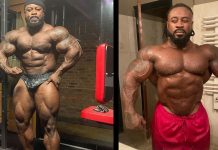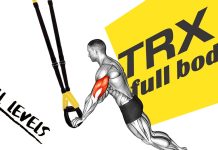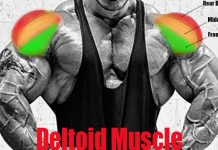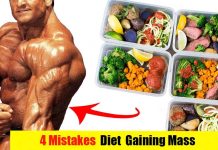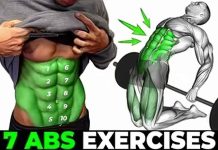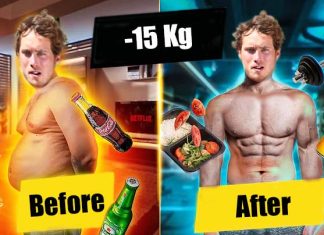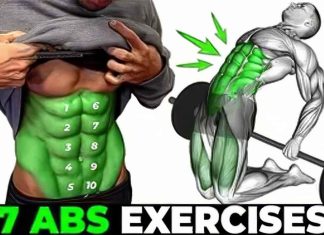4 Mistakes Diet when Gaining Mass
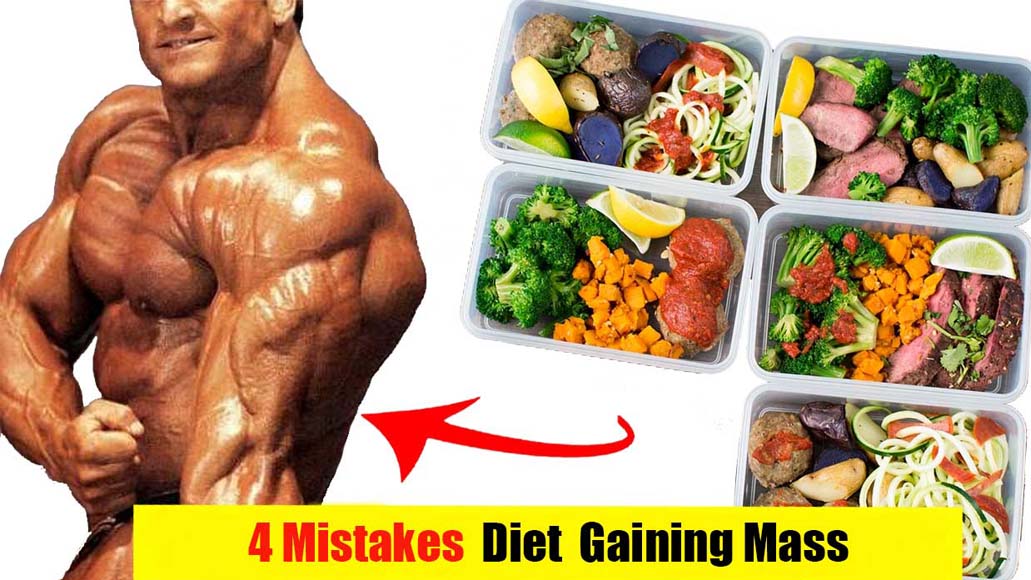
Sorry bro, but food for weight gain is not just adding another egg to your morning omelet or another breast to the pan! Stop making these 4 mistakes in the kitchen when gaining weight.
Many people call themselves hardgainers, not knowing how to eat and pump up properly, but guided only by the lack of weight gain when playing sports. Attentive trainers and nutritionists who ask such people a few questions usually immediately reveal the reasons for the lack of weight and muscle growth.
These are skipping meals, exercising in the gym only a couple of times a week, and abuse of treadmills, combined with active sports.
But the biggest problems are definitely in the kitchen. Start building muscle today by correcting these 4 mistakes diet below!
# Mistake 1: You are eating too much protein
The Bodybuilding Society has created a fourth macronutrient called “Brotein“. Unlike its brother “protein”, the more “bro-thein” you eat, the bigger you get, your muscles swell more and your endurance gets higher. The main thing is to consume more “Brotein”!
Alas, there is no noteworthy research that excessive, maximum protein intake can lead to maximum muscle growth. But there is research on the amount of protein needed for optimal muscle growth. A study published in the Journal of Sports Science reviewed several studies and identified optimal protein adaptations among athletes. The conclusion is that they can be achieved by consuming 0.6-0.8 grams per pound of body weight per day (which is approximately equal to 1.2-1.6 grams of protein/kg of body weight per day).
Over-consumption of protein beyond these numbers upwards, you won’t get any noticeable muscle gains, no additional synthesis will follow, even if you add one more chicken breast, even if you add another whole chicken.
On the other hand, excess protein can negatively affect your appetite, drowning it out and thereby stopping the intake of other macronutrients that are equally important for stimulating muscle growth, such as fat and carbohydrates.
This is because the protein triggers the release of numerous stimulatory hormones, namely cholecystokinin (CCK) and peptide YY (PYY), both of which send satiety signals to the brain and help curb appetite.
In other words, to saturate the body with excess protein means to stop muscle growth. However, if you are on the contrary losing weight, sand ticking to a diet, then increased protein intake in this context will give you the most advantageous position in the fight for appetite control!
Solution of the 1 Mistakes
Set your protein intake to 1.2-1.6 grams of protein per kilogram of body weight per day and distribute this intake evenly throughout the day. For example, this will be about 30 grams four times, which is not difficult at all and does not require high financial costs for huge servings of protein.
# Mistake 2: You are eating too much fiber
Of course, you have read the Internet, studied all the articles about nutrition in fitness, memorized all the advice about the importance of fiber, which all the texts on sports sites are oversaturated with, and now you can have a lot of information, but without practice, it can all turn into a routine and lack of results. Also, there will be difficulties not only with losing weight but also with gaining body weight.
How is it that everyone should only eat brown rice with broccoli? It’s quite simple, fiber will slow down your digestion and “enrich” your stomach with unnecessary volume, which will drown out your appetite for a long time, and again you will leave too many calories on the table, such necessary calories for growth.
You try to eat more, and fiber works in the opposite direction because it is good for weight loss when you have problems with appetite control and strict calorie counting on a diet.
Solution of the 2 Mistakes
1. Less Fiber when Gaining Mass
Choose low-fiber foods, especially for important meals before and after your workout at the gym. This will provide your body with more energy without stretching the absorption of products over time, which will positively affect the movement towards your goal.
2. More Fiber if you’re Losing Weight
If your goal is to lose weight, increasing the amount of fiber-rich foods like broccoli, asparagus, etc. will help trick your body into eating everything out of your fridge in the evenings.
# Mistake 3: You don’t eat fractionally
To gain weight, you must take in more calories than you expend – this is a well-known and inexorable fact. But how do you cram such large amounts of food into yourself?
For example: Consuming 3600 calories in three or six meals a day?
If you are completely new to gaining mass and have been leading a normal lifestyle, with its stable “breakfast-lunch-dinner”, then you may think that three meals a day are easier. But those who have known the world of fitness know that the second option is more convenient and even preferable. Trying to consume all these huge portions of dishes, future champions are faced with the feeling of a bloated stomach, and heaviness for a long time.
These moments leave a psychological imprint every time they come to the table, which in many cases makes them give up on their dreams before they see real results on the scale.
In addition, even distribution of protein intake over multiple meals versus fewer meals has been recommended to optimize the rate of muscle protein synthesis after 24 hours.
The more often you eat to build muscle mass, so to speak, the more growth opportunities you create for yourself.
Solution of the 3 Mistakes
If you want to put on weight, aim to eat at least five to six times a day. There is no other variation!
# Mistake 4: You are not using liquid forms of food
If lack of appetite is the biggest hurdle to putting on those cherished pounds on the scale, then eating smaller meals is a great first step in the right direction.
You can quickly get bogged down in the routine of cooking, washing dishes, wanting to eat, and even chewing helplessness. Let’s tell you how to win in the fight against apathy to eat, cook, and everything connected with it!
Introducing so-called liquid calories into your diet can be a weapon of victory on the way to your goal.
How?
It’s elementary because it’s much easier to drink liquid calories when you don’t feel too hungry, but the time on the clock says that now is an important meal.
Take all the no-cook or pre-cooked foods, load them into your blender, add the necessary sports supplements, such as protein or glutamine, depending on the training time, and you’re done!
Solution of the 4 Mistakes
If you’re trying to increase the calories you need to support growth, plan on one to two shakes of liquid calories daily as a snack between meals. Of course, you can also make breakfast in a blender, which is also a particularly good idea if you run out of the house in the morning and often miss the necessary calorie recharge because of this.
Сonclusions
We hope that this article will help you gain weight with less difficulty than you did before reading it, stay tuned for new nutrition hacks on our website.
Source:
- Phillips, SM, & Van Loon, LJ (2011). Dietary protein for athletes: from requirements to optimum adaptation. Journal of Sport Sciences , 29(sup1), S29-S38.
- Belza, A., Ritz, C., SA?rensen, MQ, Holst, JJ, Rehfeld, JF, & Astrup, A. (2013). Contribution of gastroenteropancreatic appetite hormones to protein-induced satiety. The American Journal of Clinical Nutrition , 97(5), 980-989.
- Mamerow, MM, Mettler, JA, English, KL, Casperson, SL, Arentson-Lantz, E., Sheffield-Moore, M., … & Paddon-Jones, D. (2014). Dietary protein distribution positively influences 24-h muscle protein synthesis in healthy adults. The Journal of Nutrition, 144 (6), 876-880.


